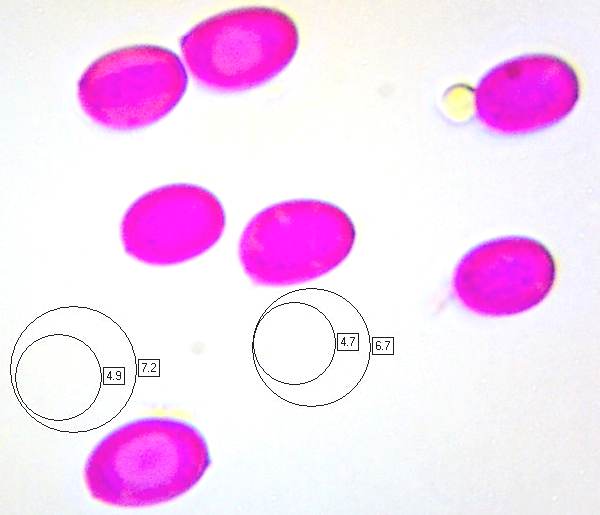Lepiota subincarnata J. E. Lange - Fatal Dapperling
Phylum: Basidiomycota - Class: Agaricomycetes - Order: Agaricales - Family: Agaricaceae
Distribution - Taxonomic History - Etymology - Identification - Toxicity - Reference Sources
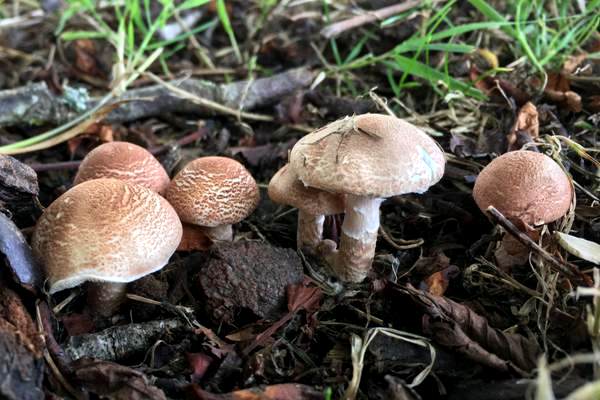
Several other dapperlings are superficially similar to the Fatal Dapperling Lepiota subincarnata, whose scales are not always as deeply pink tinged as those shown on this page. Like so many other small dapperlings Lepiota subincarnata is a toxic toadstool.
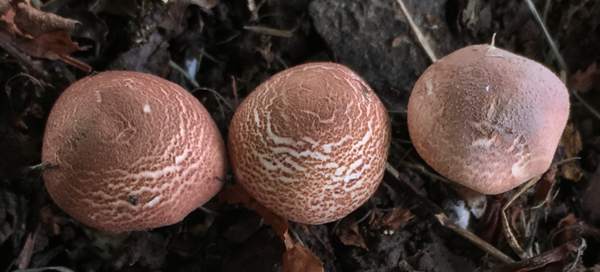
Distribution
Quite a rare find in Britain and Ireland, Lepiota subincarnata occurs also in parts of mainland Europe and in North America.
Taxonomic history
This mushroom was first described scientifically in 1940 by Dutch mycologist Jakob Emanuel Lange, who named it Lepiota subincarnata, which remains its generally-accepted scientific name.
Synonyms of Lepiota subincarnata include Lepiota josserandii Bon & Boiffard, and Leucoagaricus josserandii (Bon & Boiffard) Raithelh.
Etymology
Lepiota, the genus name, comes from Greek words Lepis-, meaning scale, and -ot, meaning ear. Scaly ear fungus is an interpretation, therefore. Scales on a convex (vaguely ear-shaped, perhaps) cap are characteristic of fungi in this genus, as also are free gills and a stem ring.
The specific epithet subincarnata indicates a flesh-toned (pink) colouring that is less than intense.
Identification guide
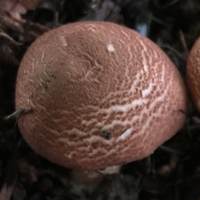 |
CapInitially hemispherical, becoming broadly convex and sometimes almost flat with a slight umbo; covered in pinkish-brown fine woolly scales often forming irregularly concentric rings, paler and more widely spaced towards the margin; flesh white. Cap diameter at maturity ranges from 2 to 3.5cm. |
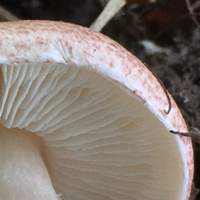 |
GillsThe free, crowded gills are creamy white. The cheilocystidia are clavate. |
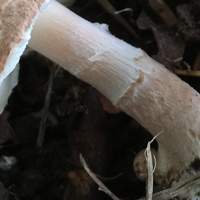 |
StemCreamy whites, 2.5 to 5cm long and 4 to 9mm diameter; bulbous base; flesh white with a brownish tinge. Flushed with a slight pinkish tinge, the upper half is smooth while the lower stem, below an indistinct ring zone, is decorated with fibrous scales. |
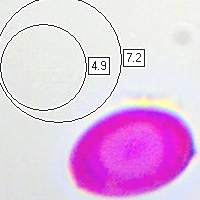 |
SporesEllipsoidal; smooth, 6-7.5 x 3-4μm; dextrinoid.
Spore printWhite. |
Odour/taste |
Odour faint, sweet. Deadly poisonous: do not taste. |
Habitat & Ecological role |
Saprobic, solitary or in small groups in broadleaf and mixed woodlands; sometimes seen on lawns. |
Season |
July to November in Britain and Ireland. |
Similar species |
Lepiota ignivolvata has a bright orange or red-brown ring low down on the stem. Lepiota cristata is typically larger with brownish scales. |
Toxicity
This is a deadly poisonous species. In fact, in my opinion there are no dapperlings worth collecting to eat, particularly because confident identification in the field is very difficult and several others are also seriously toxic toadstools. For example, Lepiota cristata the Stinking Dapperling is poisonous and could be mistaken for a small edible Parasol Mushroom Macrolepiota procera. If what you believe to be Parasols are smaller than 10cm in cap diameter then check very carefully, because it is possible that they are actually poisonous Lepiota species.
Reference Sources
Funga Nordica: 2nd edition 2012. Edited by Knudsen, H. & Vesterholt, J. ISBN 9788798396130
British Mycological Society. English Names for Fungi
Dictionary of the Fungi; Paul M. Kirk, Paul F. Cannon, David W. Minter and J. A. Stalpers; CABI, 2008
Taxonomic history and synonym information on these pages is drawn from many sources but in particular from the British Mycological Society's GB Checklist of Fungi.
Acknowledgements
This page includes pictures kindly contributed by Simon Harding.
Fascinated by Fungi. Back by popular demand, Pat O'Reilly's best-selling 450-page hardback book is available now. The latest second edition was republished with a sparkling new cover design in September 2022 by Coch-y-Bonddu Books. Full details and copies are available from the publisher's online bookshop...

